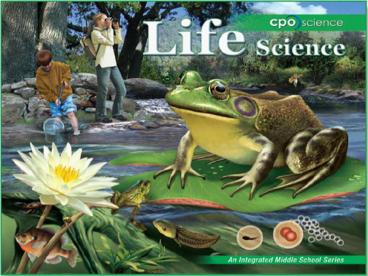Living Systems - PowerPoint PPT Presentation
1 / 18
Title:
Living Systems
Description:
Living Systems Chapter Three: Classifying Living Things 3.1 Types of Living Things 3.2 Dichotomous Keys 3.1 Types of living things Living things are classified by ... – PowerPoint PPT presentation
Number of Views:86
Avg rating:3.0/5.0
Title: Living Systems
1
(No Transcript)
2
Living Systems
3
Chapter Three Classifying Living Things
- 3.1 Types of Living Things
- 3.2 Dichotomous Keys
4
3.1 Types of living things
- Living things are classified by similar
characteristics. - Each different type of organism is called a
species. - It is estimated that there are over ten million
different species on Earth.
All of the same kind of dust mite are members of
a single species.
5
3.1 Classifying life
- One system of classification groups all living
things into one of six kingdoms
- Fungi
- Plantae
- Animalia
- Archaebacteria
- Eubacteria
- Protista
6
3.1 Classifying life
- To classify a living thing into one of the
kingdoms, scientists ask 3 questions - Does it have prokaryotic (simple) cells or
eukaryotic (complex) cells? - Is it single-celled (one-celled) or multicellular
(many-celled)? - Does it get energy by making its own food (as a
producer) or by getting food from other organisms
(as a consumer)?
7
(No Transcript)
8
3.1 Two kingdoms of bacteria
- Bacteria are the simplest of all living things.
- They are single-celled organisms and their cells
do not have a nucleus. - Some bacteria can produce their own food.
- Others break down food and absorb it.
Kingdom Archaebacteria
Kingdom Eubacteria
9
3.1 Protists
- Members of the Kingdom Protista are called
protists. - Protists are an odd group of organisms because
they have many different characteristics.
10
3.1 Fungi
- Fungi are important because they break down
rotting things and return the nutrients to the
soil. - Kingdom Fungi includes the fungi, mushrooms,
molds, and yeasts.
11
3.1 Plants
- The Kingdom Plantae is made up of multicellular
organisms whose cells have a nucleus. - In photosynthesis, plants convert energy from the
sun and store it in the form of molecules.
12
3.1 Animals
- Animals are multicellular organisms with cells
that have a nucleus. - Beetles, worms, snakes, and birds are classified
into the Kingdom Animalia.
13
3.1 Plant and Animal kingdomscompared
14
3.1 Classifying life
- Taxonomy is the process of identifying and
classifying living things. - A Swedish scientist and explorer named Carolus
Linnaeus (17071778) developed a system of
classification in the 1700s. - There are currently seven levels of
classification.
15
3.1 Levels of classification
- Organisms with shared characteristics are grouped
together. - What characteristic do these organisms share?
16
3.1 Levels of classification
- For animals, the levels of classification are
kingdom, phylum, class, order, family, genus, and
species.
- At what level are these two animals classified
differently?
17
3.1 Scientific Names
- A scientific name is the two-part, scientifically
recognized name given to an organism, consisting
of its genus and species.
18
3.1 Scientific Names
- You may have a difficult time understanding
scientific names because they are usually in
Latin or Greek. - Felis is Latin for cat and domesticus is Latin
for domesticated.































